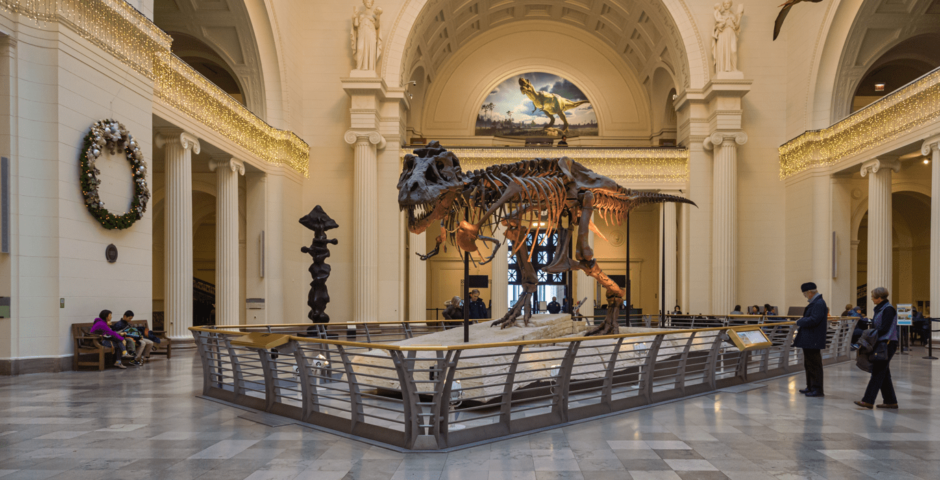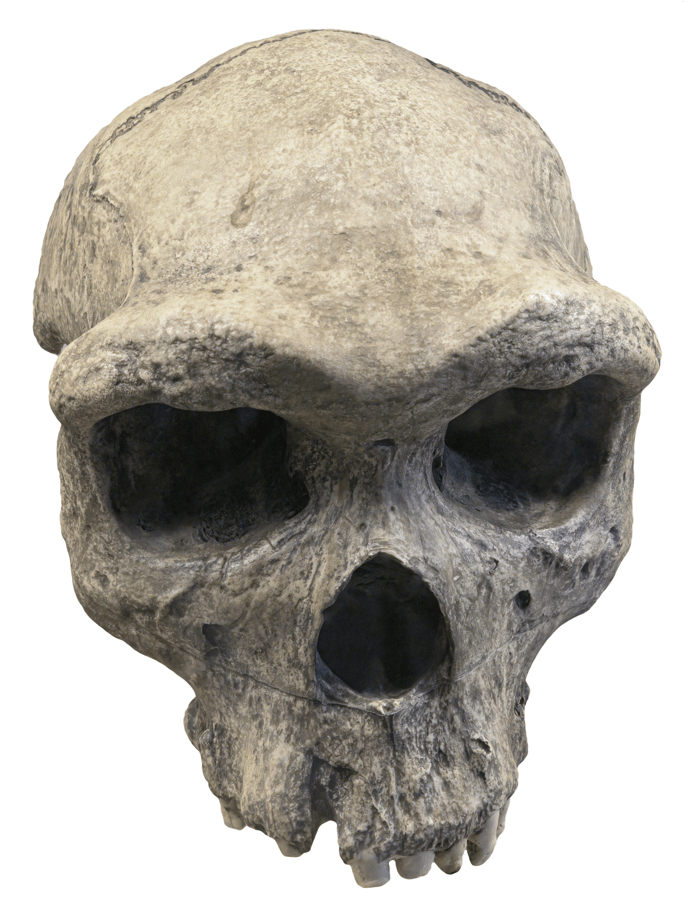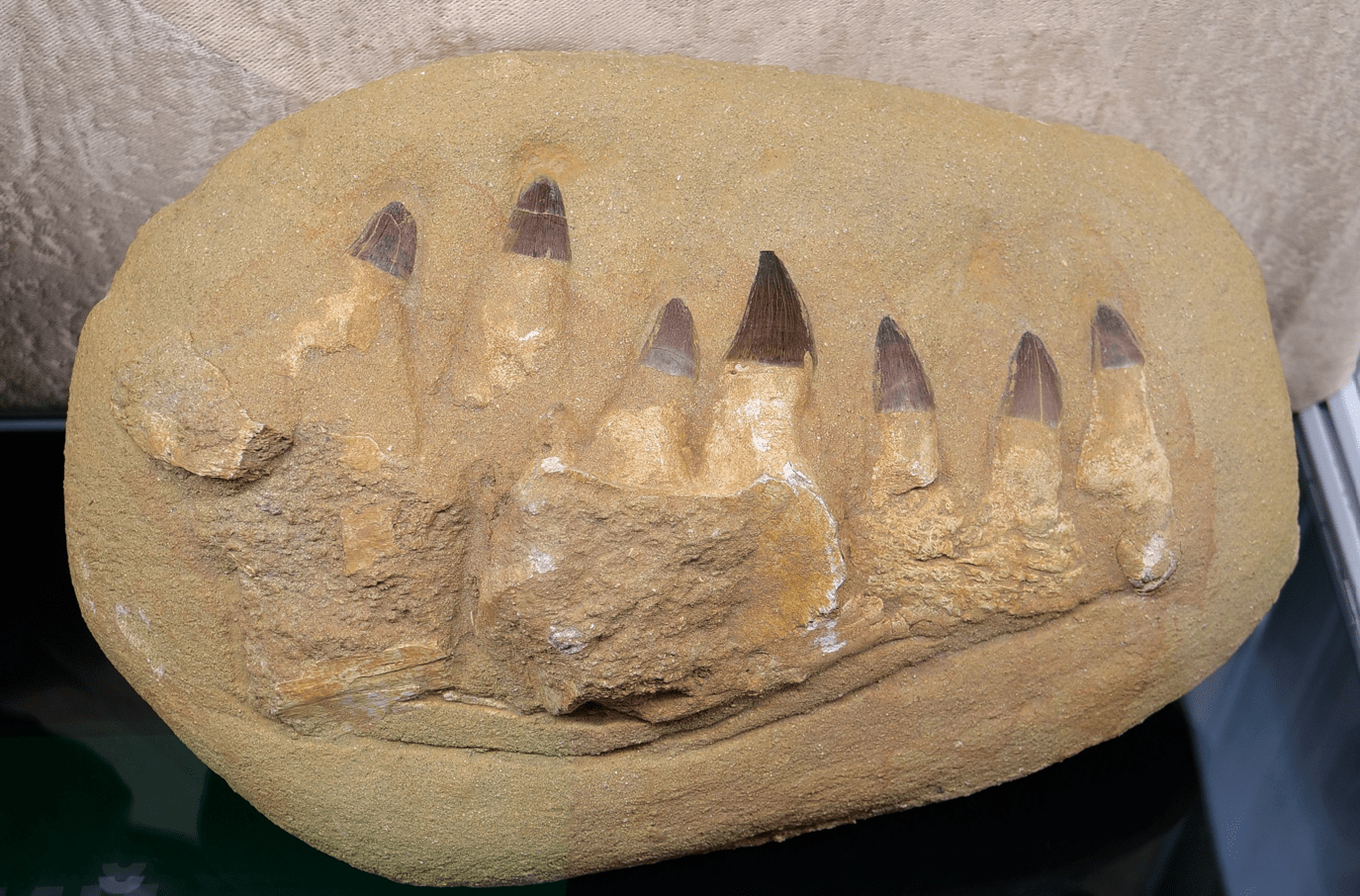Fossils as looted art?

The position of fossils in the debate about looted art.
Looted art is a subject that has received increasing attention over the past few decades. Often this involves art objects that were taken from colonies and have since resided in European museums. There also exists disagreement between European countries about “stolen” objects. The discussion often flares up when countries and/or communities demand these objects back. This sometimes yields results; for example, an eleven-meter-high totem pole returned, after nearly a century in Scotland, to the indigenous Nisga’a community in Canada last month. A lesser-known facet of these discussions is the debate about fossils. Opinions on the status of fossils as looted art or stolen objects, and on the possibility of reclaiming fossils, vary. It is important to clarify the status of these objects, in order to properly resolve these discussions.
Fossils as ‘looted art’
Whether fossils can be qualified as “looted art” is a debate in itself. When it comes to looted art, art objects or objects of cultural or religious value come to mind. The fossilized ribs or teeth of an animal that lived millions of years ago do not quite fit into that picture. When it comes up, people tend to look at the scientific value of these findings. Yet there can also be a cultural aspect. This is true, for example, if the fossil played a role in local myths and legends, or if it was used as jewelry or as a means of exchange. An example of such mythology is the story of the giants in Tlaxcala, Mexico, who allegedly killed all the ancestors of the Tlaxcalteca people, supposedly inspired by Colombian fossils of mammoths. In addition, natural history museums are also considered cultural attractions.
Arguments based on the law are often based on the International Covenant on Economic, Social and Cultural Rights (ICESCR). Pursuant to Article 15 of this convention, everyone has the right to participate in cultural life. There exists some disagreement about the precise definition of “cultural life”. Generally, it includes the works of artists and scholars, which could include access to books, works of art and objects of historical, scientific and/or cultural interest. Article 15 ICESCR is used to argue that the physical absence of a community’s cultural object constitutes a violation of human rights. It is more difficult to prove this violation in the case of a fossil than in the case of a ceremonial or sacred object, for example. In this context, it is relevant what kind of fossil it is. After all, it is easier to demonstrate that extremely special and rare fossils are important to the identity of a country or region.
There is no European policy on looted art, although there is a nonprofit Commission for Looted Art in Europe (CLAE). Several years ago, the European Parliament called the European Commission to action to create legislation to improve the cross-border restitution of looted art. A resolution passed on 17 January, 2019, proposes a European database on looted art. It also suggests that disputes over looted art should resolved in a better way, but without the intervention of a judge. Through a resolution, the European Parliament sends a certain signal: the ‘political will’. The goal is often to spur the European Commission into action, but it does not contain binding regulations. In 2018, however, a law was passed requiring import licenses for cultural goods. Concrete European regulations on the actual return of looted art have, thus, not (yet) been written.
The Dubois Collection
Indonesia reclaimed eight art and natural science collections from the Netherlands last year. One of these reclaimed collections is the complete Dubois Collection. This collection is on display at Museum Naturalis in Leiden and consists of about forty thousand fossils. One of the items in this collection is the world-famous “Dubois skull cap”. Dubois was looking for the missing link between humans and apes. The physical remains, of which the skull cap is a part, would be this missing link and would, therefore, prove that the humankind and the great ape share a common ancestor. Indeed, the eyebrow arches of the cap were thick and looked ape-like, but the size of the brain was between that of humans and great apes.

Dubois Skull
Earlier this summer, 472 artifacts have already been returned to Indonesia. However, the fossils still remain in Naturalis. Their website states that the question now is whether the Dubois collection complies with the Dutch return policy. Answering this question is not up to Naturalis, but to the Gonçalves Commission and demissionary State Secretary Culture and Media Gunay Uslu. The Indonesian government emphasizes that although the fossils – strictly speaking – are not looted art, they do have social and cultural significance for Indonesia.
The Mosasaurus
The Mosasaurus, or “lizard of the Meuse River”, lived about 75 to 65 million years ago. The first fossilized remains of the reptile were found in 1778 in the Sint-Pietersberg in Maastricht. This is where the name comes from; Mosa is the Latin name for “Meuse”. After the find, the specimen was soon moved to France. Indeed, during that period Maastricht was under French rule, an era also known as the ‘Siege of Maastricht’. Political commissioner Augustin-Lucie de Frécineals accompanied the French army and his purpose was to seize special art objects and other objects of (scientific) value. These objects were then transported to France. This fate also awaited the Mosasaurus. In 1794, the French took the fossil to the then newly opened Muséum national d’Histoire naturelle in Paris. It can still be admired there.
Bram Nab argues that the fossil should return to Limburgian soil. The group chairman of Forum voor Democratie in Maastricht, therefore, raised it with the city council. He argues that the Mosasaurus is one of the many special objects the Muséum national d’Histoire naturelle has at its disposal, while for the Natuurhistorisch Museum in Maastricht, it would be a real crowd puller. They currently only possess a cast of the jaw of the specimen. Nab’s proposal to talk to the French about returning the specimen was widely supported. The city of Maastricht aims, therefore, to get the Mosasaurus back to the ground where it was found centuries ago. The city of Maastricht emphasizes that the specimen is part of the city’s heritage. The French object that the fossil is culturally important to them, as the Mosasaurus was central to the research of the French founder of paleontology, George Cuvier. The fact that the Mosasaurus is, to varying degrees, of cultural importance to both countries does not simplify the discussion.

The jaw of a Mosasaurus
Moreover, this is not the first time an attempt at restitution has been made. Maxime Verhagen (CDA), a resident of Maastricht, also attempted this during his term in the European Parliament, but to no avail. Between 1814 and 1827, Rosa Godding, a niece and heiress of the owner of the land where the Mosasaurus was found, also fought hard for it. She wanted either the fossil itself or to receive the compensation previously promised to her uncle. That this did not go smoothly is shown just by the fact that she wrote letters to the French Minister of Foreign Affairs, the Governor of Limburg, the Dutch Ministry of the Internal and Foreign Affairs, and even King Willem I. Her efforts were rewarded with a sum of 6250 francs, although that is considerably less than the actual value of the specimen. Indeed, that was estimated by connoisseurs to be about fifty thousand francs.
It is interesting that the Netherlands is asking for the return of the Mosasaurus without granting the Indonesians’ request. Concrete legislation from the European Union on the proprietary rights and restitution of looted art would be a welcome tool in discussions like these.
Julia is studying Notarial Law at Utrecht University. She is also studying Liberal Arts and Sciences, with a major in International relations in historical perspective.
Images: Shutterstock




